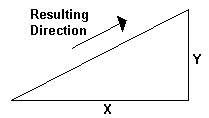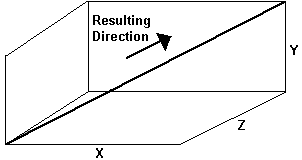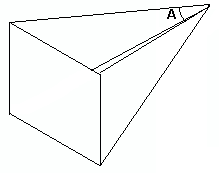
Old Content This page is now considerably out-of-date.

Co-ordinate System
The VRML 1.0 Final Specification explains this:
VRML uses a Cartesian, right-handed, 3-dimensional coordinate system. By default, objects are projected onto a 2-dimensional device by projecting them in the direction of the positive Z axis, with the positive X axis to the right and the positive Y axis up. A camera or modelling transformation may be used to alter this default projection. The standard unit for lengths and distances specified is meters. The standard unit for angles is radians.
Vectors
Vectors are used to specify directions and points, relative to the origin. VRML defines two types of vector:
- SFVec2f - Two-dimension vector made of x and y displacements.

- SFVec3f - Two-dimension vector made of x, y and z displacements.

Any of the displacements - x, y or z - can be negative. There are also types for lists of vectors - MFVec2f and MFVec3f.
Rotations
To apply a rotation to an object, you need to specify the axis of rotation using a vector, and the angle of rotation.

Camera Views
You can set the starting point of the viewer, by defining a perspective camera. With this kind of view objects that are further away appear smaller. It has these properties:
- position (SFVec3f) - The initial position of the viewer.
- orientation (3FRotation) - The vector part of this specifies the direction the viewer is looking, and the angle rotates their head.
- heightAngle (SFFloat) - Sets the width of view: large values are like a wide angled lens, while small values telescopic.
